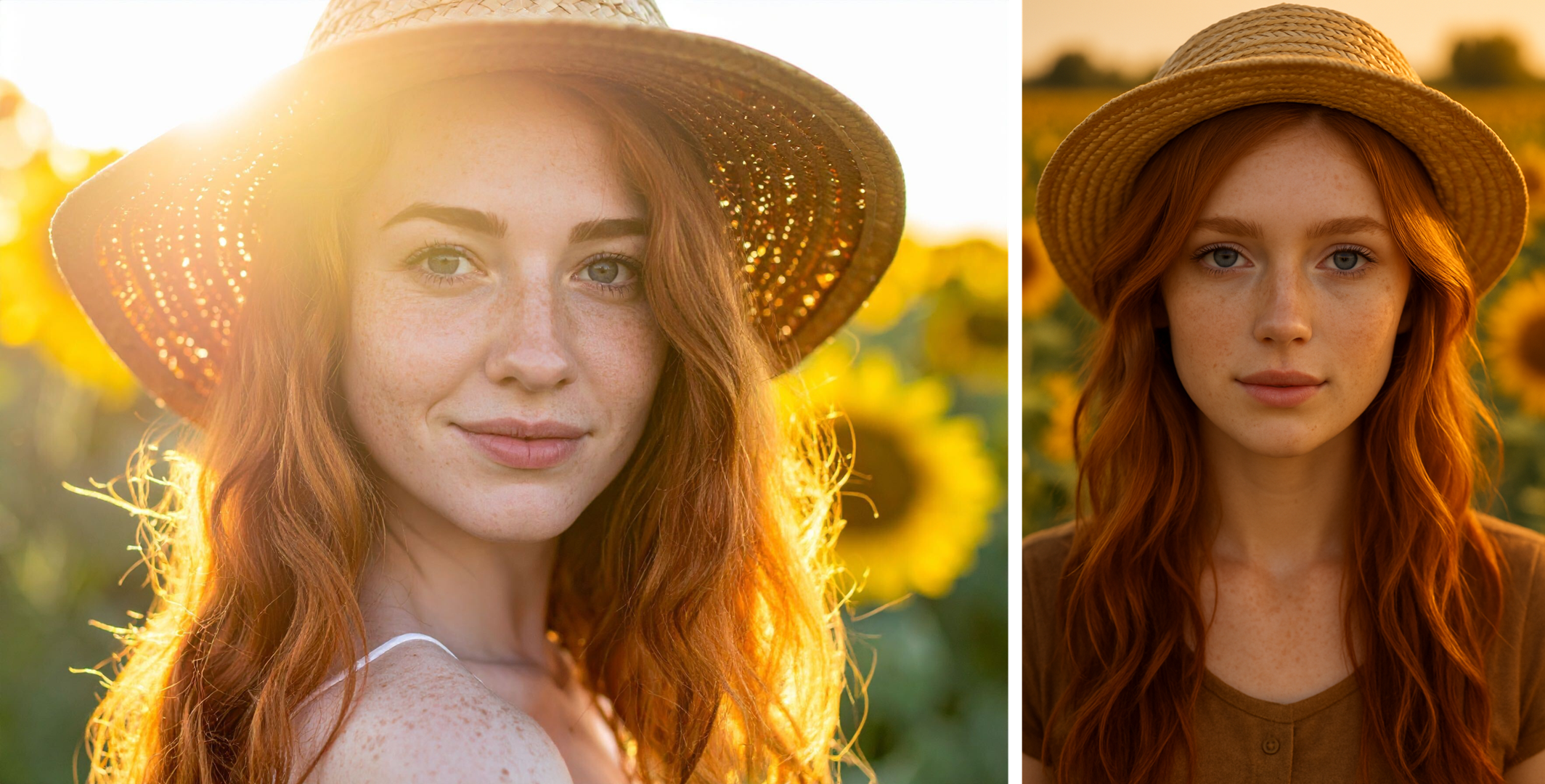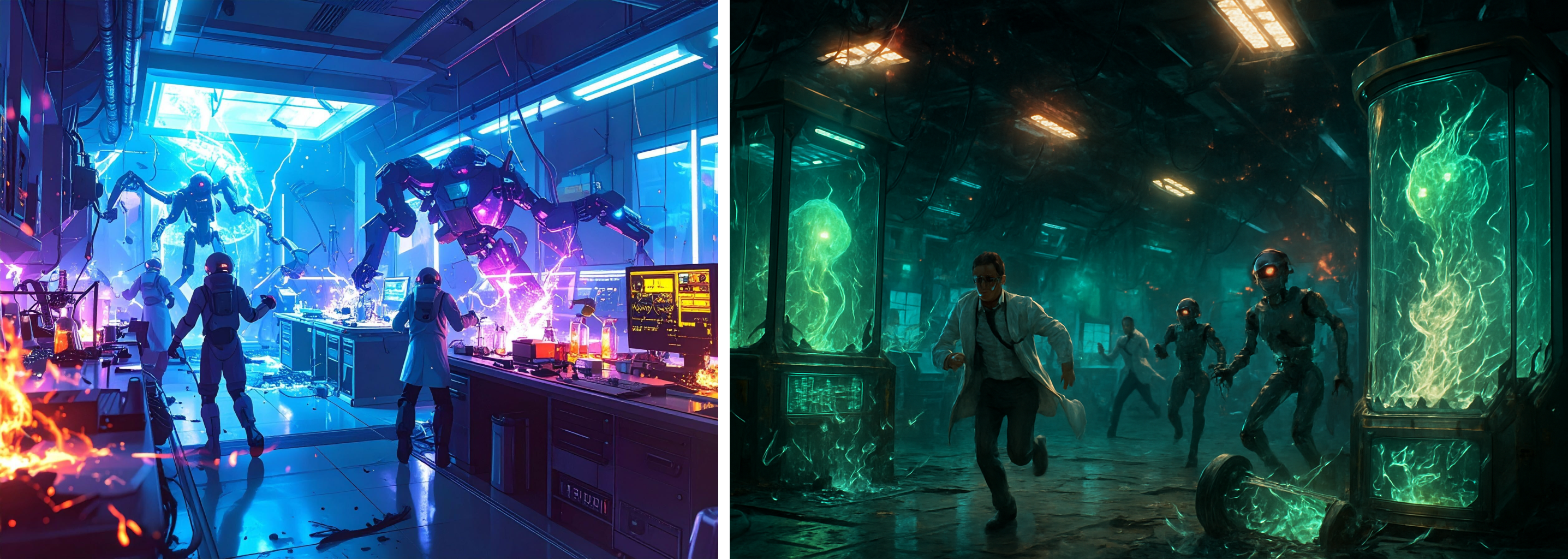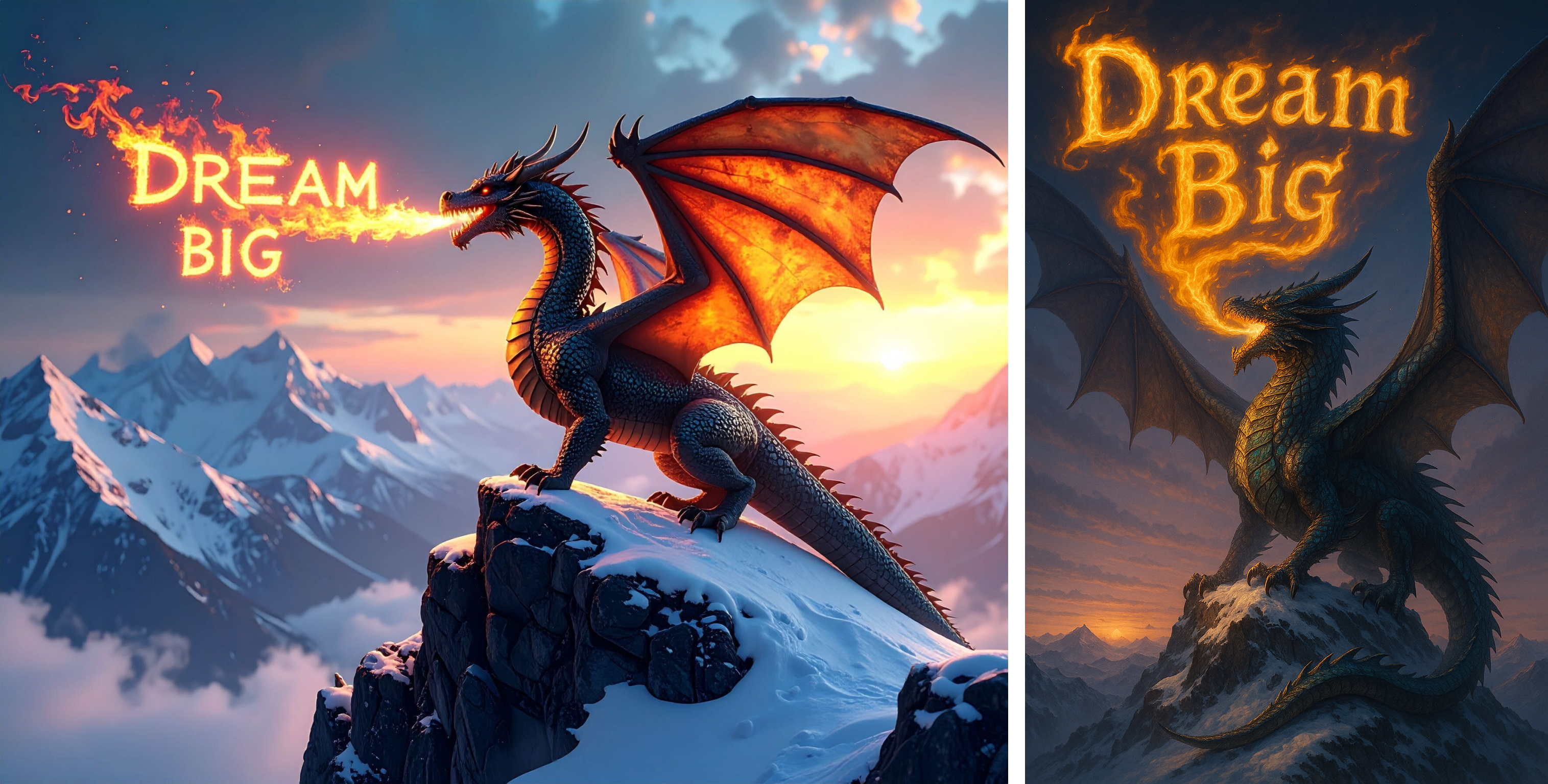If you’ve ever walked through an art gallery of pieces, you might have noticed how some pupils of the same teacher or school share some sensibilities and techniques. Turns out something similar can happen with AI image generators.
Adobe has been showing off its new Firefly Image Model 4, producing many impressive images. I decided to see how it stacked up against ChatGPT’s recently upgraded image generator. The results had me imagining two young but very talented art students who haven’t developed their own personal styles. They hew closely to their teacher’s methods and produce very good, but similar, results.
I tested a handful of prompts on the two models to see what they would come up with, and you can see how they each did. The Firefly creations are on the left, and the ChatGPT images are on the right.
Portraits

I started with a prompt for a portrait, as realistic people are probably the most in-demand kind of AI image. I asked both AI tools to make “A close-up portrait of a red-haired woman with blue-grey eyes and a light smattering of freckles, wearing a straw hat, standing in a sunflower field at golden hour.”
The two virtual characters look like they could be cousins, if not siblings. The lips, hair texture, even the shape of the hat are all nearly identical. Firefly’s “photo” may have taken place on a warmer day based on the outfits, but otherwise, the resemblance is remarkable. Without prior knowledge or metadata, it would be hard to tell which AI model produced which result, but they clearly trained on photographic databases with some of the same people in them.
Complex Scenes

Next up I wanted to see how they compared in a complex, hectic scene. As a fan of B-movies from decades ago, I asked the two AI tools to make “A sci-fi laboratory in chaos, with broken glass, flickering lights, scientists running, robots malfunctioning, and glowing alien specimens escaping containment.”
There was some notable divergence here. I deliberately put in a few different things happening at the same time. Firefly focused on the robots, and ChatGPT emphasized the alien aspect, though some of the aliens may be robots too. Both did well at filling the image with activity in different ways. I’d give the edge to ChatGPT, though, partly for the alien brains and partly for the way the scientists are running for their lives.
Breakfast time

Feeling a little peckish, I next decided to see how the two would perform at making me a (digital) breakfast. Food can be tricky to get right with AI, and it’s always very obvious when errors creep in. That’s why I wanted to see how they did at showing me: “A top-down view of a gourmet breakfast spread, including pancakes, berries, and a latte with latte art.”
Both models were very eager to show off their berries. The other Firefly options looked like a truck filled with the harvest had tipped onto the plate. And ChatGPT seems to think I’m a stereotypical young child who will happily consume berries until they explode. Still, the pancakes for both look edible. The convergence popped up again, though, with the latte art. I didn’t specify what it should be, but while ferns are a popular option, it’s notable that they are both the kind of fern art with a heart at the top, though one of Firefly’s cups apparently had a lot of cinnamon spilled into it earlier.
Legendary words

I decided to spice up the prompt with a little more detail as well. The final version asked Firefly and ChatGPT to make “A majestic dragon with iridescent scales perched atop a snowy mountain peak at dawn with its massive wings fully spread as it breathes a stream of fire that curls into the words ‘Dream Big’ in bold, fiery letters.
There are a trillion paintings and descriptions of dragons out there, and the only specifics I asked for were iridescent scales and that it be majestic. Somehow, both Firefly and ChatGPT produced dragons with the same ruff of horns around the face and almost dinosaur-like tails. To return to the art student metaphor, Firefly was clearly more interested in the landscape than in any calligraphy for the words.
ChatGPT, meanwhile, took the bold and fiery letters part of the prompt seriously and made Firefly’s look practically like clip art. The dragon’s pose is also more dynamic and interesting. But, again, they may as well have been two young painters standing next to each other while a teacher gave pointers on how light looks at dawn in the mountains.
Both Firefly Image 4 and ChatGPT can make beautiful, strange, or unsettling images. Whether you can tell the difference between the two models is far trickier. Both know how to make a human face; in fact, they can make faces that look related. Both know how to convey a busy scene, spell words (in fire), and even make breakfast.
These models and others like them have reached the point where picking one to use is as much a matter of budget and other products from the company you want to use as it is a matter of image quality or taste.












